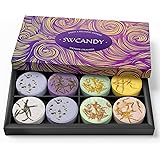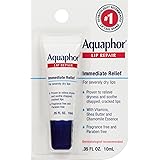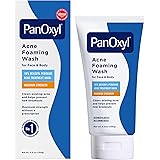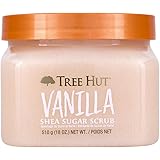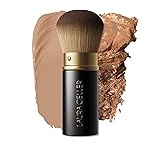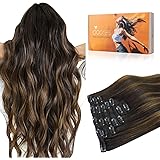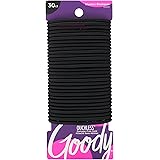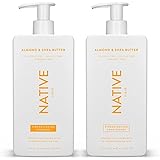Achieving truly healthy, vibrant hair often feels like a complex journey, but approximately 70% of hair health is influenced by daily care practices. Understanding the foundational techniques can significantly transform your hair’s appearance and resilience. The accompanying video expertly highlights three essential haircare tips that can make a substantial difference in your routine. These insights are not merely fleeting trends; rather, they are time-tested strategies for maintaining optimal hair condition and fostering overall hair wellness.
Embracing Pre-Wash Hair Oiling for Enhanced Hair Protection
1. One highly effective method for protecting your hair involves pre-wash oiling, a practice that has been cherished across various cultures for centuries. Applying a nourishing oil before shampooing is known to create a protective barrier around each hair strand. This barrier significantly mitigates the harsh, stripping effects often associated with hot water and the cleansing agents found in many shampoos. Consequently, hair is left feeling less dry and more supple after washing.
The benefits of consistent hair oiling extend far beyond simple protection during washing. This technique is frequently observed to improve overall hair growth patterns, with scalp stimulation being a contributing factor. Additionally, regular application of hair oil can play a crucial role in preventing common scalp issues such as dandruff, by providing essential moisture and balance. Furthermore, the strengthening effect of oil on the hair shaft may contribute to a reduction in hair fall, promoting denser and healthier hair over time. For optimal results, incorporating hair oiling into your routine 1 to 2 times per week is generally recommended.
Various oils can be utilized for this purpose, each offering unique properties. Coconut oil, for instance, is highly regarded for its ability to penetrate the hair shaft deeply, offering robust protein loss prevention. Argan oil is frequently praised for its high vitamin E content, which provides excellent conditioning and adds a brilliant shine. Similarly, jojoba oil, which closely resembles the natural sebum produced by the scalp, is often selected for its balancing and moisturizing capabilities. The application typically involves gently massaging the chosen oil into the scalp and distributing it through the lengths of the hair, allowing it to sit for at least 30 minutes before shampooing.
Strategically Using Clarifying Shampoo to Combat Product Buildup
2. Another vital aspect of an informed haircare routine involves the judicious use of clarifying shampoo. These specialized shampoos are formulated with stronger surfactants, which are cleansing agents designed to thoroughly remove accumulated product buildup, mineral deposits from hard water, and environmental impurities. While incredibly effective at deep cleaning, their potent nature means they should be employed with discretion rather than as a daily shampoo alternative. Overuse of these powerful cleansers can inadvertently strip the hair of its natural oils, leading to excessive dryness and potential damage.
Clarifying shampoo is best reserved for periodic use, typically a couple of times per month, to reset the scalp and hair. This frequency ensures that buildup is effectively managed without compromising hair moisture and health. For individuals with hair that tends towards dryness, it is advised that usage should not exceed three times per month. Recognizing when your hair needs a clarifying wash can involve observing signs such as dullness, limpness, or a feeling of residue even after regular shampooing. These indicators suggest that a deeper cleanse is required to restore the hair’s natural vitality and bounce.
Selecting the right clarifying shampoo is also paramount; some formulations are gentler than others while still being effective. It is often beneficial to follow a clarifying wash with a deeply moisturizing conditioner or a hair mask to replenish any moisture that may have been lost during the intense cleansing process. This practice ensures that the hair’s hydration levels are maintained, leaving it refreshed, clean, and ready to absorb the benefits of subsequent styling and conditioning treatments more effectively.
Perfecting Conditioner Application with the “Squish to Condish” Method
3. Optimizing the application of conditioner is crucial for achieving truly soft and silky hair, and the “squish to condish” method is widely celebrated for its efficacy. This technique actively promotes deeper penetration of the conditioner into the hair strands, ensuring maximum hydration and nourishment. When conditioner is simply applied and rinsed, much of its potential is often lost; however, this method ensures that product and water are effectively bound to the hair, leading to significantly improved texture and manageability.
The “squish to condish” process begins with applying conditioner to wet, clean hair, typically after shampooing. The hair is then turned upside down, which allows for better access and even distribution of the product. Subsequently, sections of hair are taken and gently squished upwards in the hand, effectively kneading the conditioner and water into the strands. This manual manipulation helps to emulsify the product, pushing it more deeply into the hair’s cuticle. This action also encourages the hair to clump together, which is especially beneficial for defining natural curl patterns.
The result of consistently using the “squish to condish” method is hair that feels remarkably softer and appears noticeably silkier. The ends of the hair, which are often the driest and most prone to damage, particularly benefit from this intensive conditioning. By ensuring that more product is absorbed, hair is better moisturized and fortified, leading to a reduction in frizz and an overall healthier appearance. Integrating these haircare tips into your regimen can undoubtedly lead to more resilient, beautiful hair over time.


